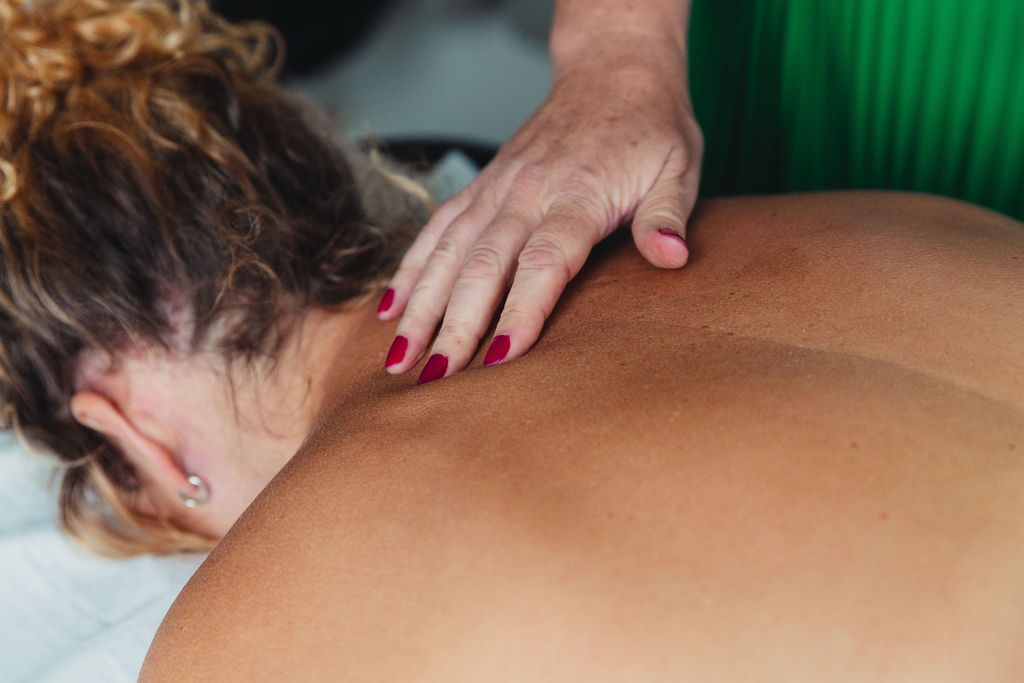Pain Management
We have all experienced pain of some description and many of us know people who suffer pain every day. As a pain management specialist, I encounter more than the average person! It has many guises – ranging from temporary strains and tears to long term health conditions.
Pain is a source of fascination for me. Why? Because people experience it and endure it in so many different ways; and there are so many ways we can manage it if we choose to open our mind to options beyond the pharmacological route.
What is Pain?
Pain starts in the brain…the brain receives pain signals via the spinal cord and specialised nerve fibres from the impacted area of the body. Simply put, the sensation of pain acts like an alarm telling us something is potentially wrong.
What are the different types of Pain?
Health professionals use different terms for different types of pain and this can influence how it is managed:
- Short-term pain is called Acute Pain. An example is a sprained ankle.
- Long-term is called Persistent or Chronic Pain. Back trouble or arthritis are examples.
- Pain that comes and goes is called Recurrent or Intermittent Pain. A tooth ache could be one.
What sort of Pain is the most common?
BACK Pain is the UK’s leading cause of disability and one of the main reasons for work-related sickness absence.
The condition affects more than 1.1 million people in the UK, with 95% of patients suffering from problems affecting the lower back. Most lower back pain is caused not by serious damage or disease but by sprains, muscle strains, minor injuries, or a pinched or irritated nerve. It can also occur during pregnancy, or because of stress, viral infection or a kidney infection..
64% of UK adults were overweight or obese in 2017, a person’s BMI, combined the body fat percentage, directly corresponds to both the risk and rate of back problems.
What is the impact of Pain?
Living with pain can have a detrimental effect on both the sufferer and the people they live/work with. Therefore finding effective tools for Pain Management is key.
- Affecting mood, sleep, mobility, role within the family, sex life, ability to work as well as other aspects of life.
- Two-thirds of people are unable to work outside the home.
- Attempts to treat chronic pain are costly to the healthcare system. The cost of back pain to the NHS and community care services is in excess of £1bn.
- The economic impact of pain is high because of absenteeism, poor productivity and people with pain leaving the work force. The productivity cost to the UK economy being between £5-10bn.
What are the NICE Guidelines for Pain Management Support?
As a practitioner of alternative health support, it is encouraging to see that the executive non-departmental public body of the Department of Health, NICE (National Institute for Health and Clinical Excellence) is about to publish it’s revised guidelines on how pain can be managed following a 4-year consultation process.
According to Draft Guidance, due for publication in 2021:
- OUT – reliance on pharmacological prescriptions
- IN – Exercise, CBT Talking Therapy, Traditional Chinese or Western Acupuncture, Electrical Physical Modalities
Why are these changes being made?
The focus of any treatment should be on reducing a person’s pain with a view to improving their quality of life. The suggested alternatives are thought to have the following benefits:
- Endorphin release – exercise, therapeutic touch, acupuncture.
- Vagus nerve stimulation – meditation, breathing, relaxation, good diet, healthy gut.
- Parasympathetic nervous system stimulation – acupuncture.
- Reframing techniques – CBT talking therapy.
- Closing the pain gate – body therapy, acupuncture
What is Chinese Medicine Acupuncture and Body Therapy?
As a post-graduate degree qualified Traditional Chinese Acupuncturist, who has also studied basic western medicine, I often get asked “so what is it?”. Not an unreasonable question and one which I could talk for hours on, but for briefness here are a few main headlines:
- A system of medicine which has been around for millennia which has adapted and evolved.
- Evidence based medicine.
- Clinically evidenced to be more beneficial than some forms of “modern” medicine.
- Misunderstood by some medics and academics but becoming more understood and more mainstream.
- Used in palliative care in the NHS.
- Gold standard modern medicine style control trials have proven it works for pain relief, nausea, headaches amongst other conditions.
What is the basis of Eastern Philosophies to Health & Wellbeing?
And the other question I get asked is, so how is it different to modern medicine; and these few short bullet points do not do it justice but to give you a flavour:
- Look at the Whole Person and treats as such.
- Every person is an individual – no one size fits all.
- The mind and the body are connected.
- No signs or symptoms are ignored – everything has a potential relevance to your pain.
- Western science is catching up with this idea – think about recent research into the link between:
- Gut health and mental health
- Fibromyalgia and trauma
- Arthritis and kidney disease
- ……………..the Chinese knew this thousands of years ago!
Pain Management Tips
So here are my tips taken from my clinical practice on how to make a positive first step in the management of your pain:
- Talk about it.
- Own and honour your feelings.
- Get help from a professional and accredited practitioner.
- Be realistic about the ups and downs of treatment programmes.
- Be open minded to other pathways of support.
- Help yourself.
- Accept your diet, your lifestyle, your weight, your habits, your posture, your sleep hygiene may all need to be addressed.
- Know you are WORTH THE INVESTMENT.
Please do get in touch if you would like to discuss how you could manage your pain differently.
Kate Morris-Bates – Clinic Director, Acupuncturist, Clinical Therapist
kate@katemorrisbates.com | 07927 895415












